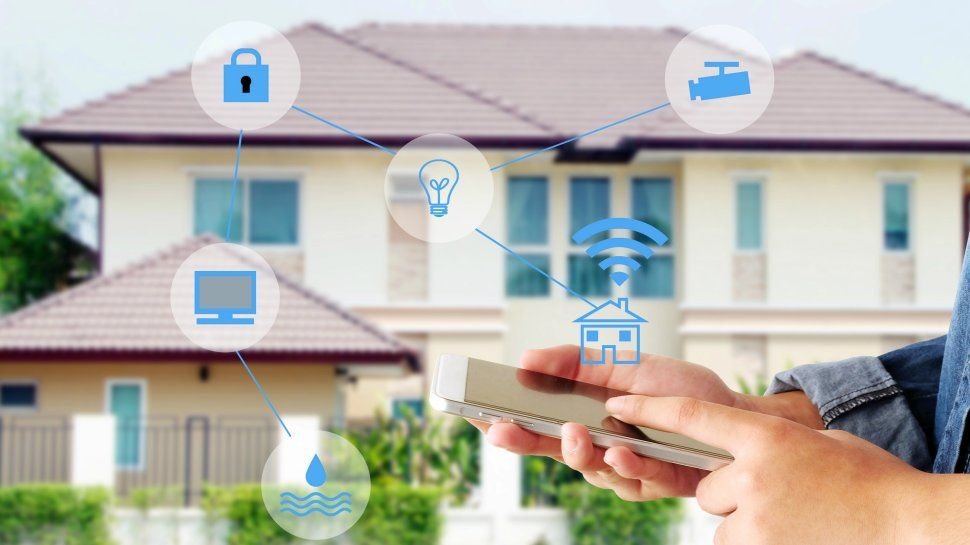

Power-over-Ethernet (PoE) is a brilliant technology for powering all types of devices for home security systems and corporate security camera systems, using only standard network cables. Regardless of which device you choose to plug in, data and power will be routed through a single cable, saving you the hassle of connecting and installing power.
About the Author Kieran Purdie is Pro AV Channel Manager & Technical Manager for Netgear Business, UK & Ireland. Because of this unique advantage, it is more flexible, less complicated, and potentially less expensive, since you may not have to worry about the cost of hiring an electrician. It shouldn't require additional drilling in walls, there are fewer security concerns, and maybe even all the cables are ready to go.
PoE configuration
A PoE setup has just three components: A PoE switch that provides a certain amount of power to some or all of your Ethernet ports, including support for 1GBASE-T, 2,5GBASE-T, 5GBASE-T, and 10GBASE-T speeds. Power can be carried over a distance of 100m, offering considerable flexibility in installing and routing cables around a building. There are three variants of PoE, all based on the IEEE 802.3 standard: PoE, PoE+, and PoE++, ranging from 15.4 W to 90 W per port. PoE has been particularly popular in offices, where there are a multitude of types of equipment that have a distinct advantage in cutting the power cord. IP phones, for example, are fairly inexpensive for a business, don't require a lot of power, and can be used with much less hassle if only one cable is needed to connect them. But there are other categories of devices you can use with a PoE switch, including printers, intercom systems, locks, and wireless access points, as well as many IoT devices. PoE switches come in all different shapes and sizes, differing in the number of ports powered, the overall power output (known as the PoE budget), and the amount of power each port can provide, which affects the type you can use with they. Unmanaged, smart managed, and fully managed switches are available with even more features like remote management and dozens of ports, and the largest total power budgets are reserved for rugged commercial PoE switches. But for a typical home and small business setup, you can get a relatively modest power budget. You probably don't need IP phones and don't worry if your home printer needs a standard power outlet. However, there is one situation where PoE is already particularly beneficial in modern homes: security cameras.
IP security cameras
IP security cameras are a rapidly growing market, gradually replacing old CCTV technology. In commercial/government use, it makes a lot of sense to switch to IP camera technology. It's easier to monitor remotely through camera feeds on the Internet, and while some consider its use controversial, AI technology in camera systems is still being developed, not. just for security reasons, but also to analyze shopper behavior in retail. When it comes to home video surveillance, using IP cameras works out to more affordable cameras with considerably improved image quality compared to older analog systems, as well as the very useful remote monitoring offered by most cameras. Many of us already have with this to keep an eye on our properties when we are away. By avoiding the need for electrical wiring, PoE cameras are more flexible to install, and you can be sure that a camera located further away will always have a strong data connection, regardless of your home's wireless signal. And each house is different. You may not want to excessively drill holes in the walls of your house to power cameras in remote areas or in the garden. A single Ethernet cable running through the building can bypass this requirement.
Home security
PoE cameras are designed to be used with Ethernet directly or come with an accessory that allows you to choose to power them over Ethernet or a standard power jack. Although all camera models vary, once connected you can expect them to function in the same way as any IP camera, controlled with apps or using web interfaces. , with cloud and network recording, etc. If you're tempted to adopt a home security camera setup, it might be tempting to explore the PoE option. The smaller PoE switches are ideal for home use, and depending on the cameras you choose, even a model with just four Ethernet PoE ports may have the ability to power an entire home security setup. Installing Ethernet ports throughout the home is an option many homeowners are considering to provide fast LAN connections in areas like the office, bedrooms, and living room. When installing cabling, it makes more and more sense to consider PoE needs, ensure that cabling type matches PoE requirements or port speed, and even install cameras at the same time. Our homes are becoming more connected than ever.

